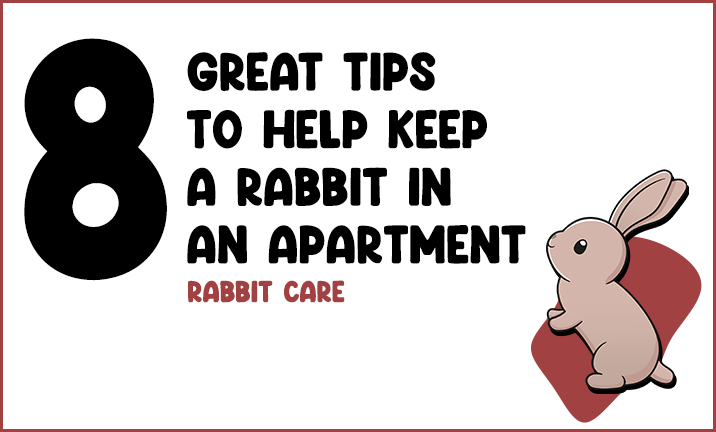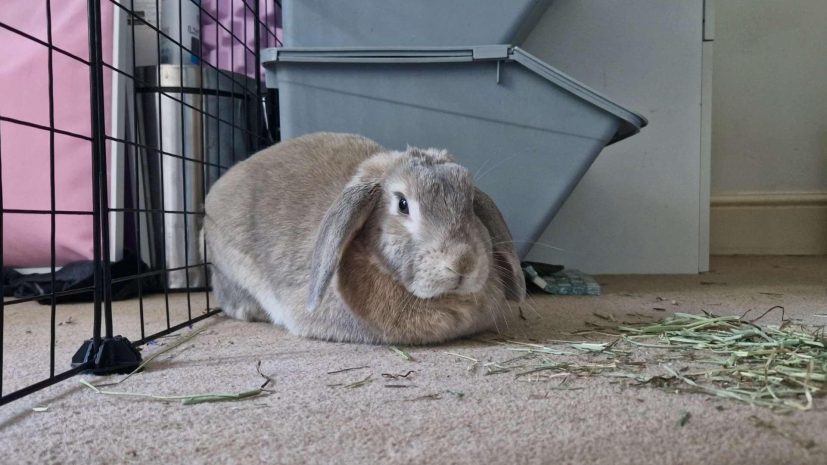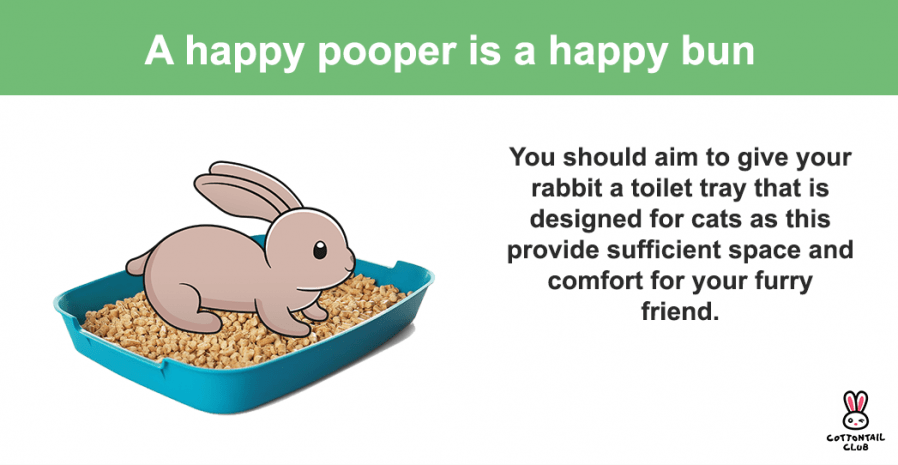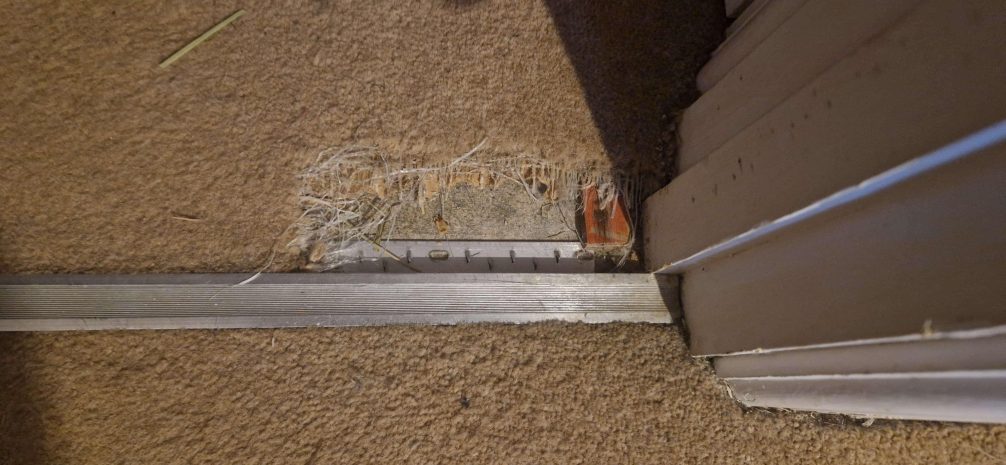

Having indoor rabbits has been one of the best experiences of my life. They’re extremely friendly and have great character. But with the good comes the bad, for example, as a natural digger with a fondness for chewing, your apartment may be at risk of damage.
Destructive behavior in rabbits is to be expected, especially as apartments are notoriously small. You’ll find plenty of times when your rabbit will dig at the corners of your carpets and chew through your sofas. This is because your rabbit needs sufficient space to run around, play, and have something to chew to keep them occupied.
Whilst rabbits are incredibly small, they still require around 12 square feet of space to run around and should not be kept in their cages. We highly recommend treating them as semi/full free roam if possible by rabbit-proofing your apartment.
First and foremost, check you’re allowed pets in your apartment. Rabbits are a long-term commitment and can live up to 10 years+. This should be noted in your housing agreement or the property management company. It’s always worth asking and getting it in writing.
Apartments can be small, sometimes too small for a dog or a cat. But rabbits make loveable little indoor pets. Full of spirit and personality, these little cuties will keep you on your feet!
Whilst rabbits do still need a lot of space, they aren’t opposed to vertical movement through cardboard castles and climbing apparatus, this doesn’t, however, mean they should have any less space to run around.
This is quite possibly one of the most important factors as your rabbit will spend a lot of time at the start in its caged area whilst it’s getting familiar with its surroundings and having you as parents. Rabbits are very social creatures, so you’ll want to place their housing somewhere that they can roam somewhat freely with room to expand and a place to hide away.
Their enclosure will need to be at least 4 times the length of your rabbit (When they’re stretched out) and the width at least 2 times the length of your rabbit (So 2×4 Rabbit), we also recommend getting quite a tall enclosure as rabbits are crafty and can hop over them.
Whilst our rabbit is now fully free-roam, we did start off with him in a small caged area that was attached to his sleeping area. Even with a fully free-roam rabbit, it’s crucial they have a spot to themselves they can hide in or feel comfortable in, this will be their territory.
Your rabbit will need a lot of social interaction, a lot of exercise, and activities that will work their little brains, so giving them space and freedom to interact with you in your space is crucial.
A step that’s often forgotten with newer owners is spaying/neutering your rabbit to slow down your rabbit’s destructive behavior. Whilst this may be something you’re not eager to go down the route of, it’s worth noting there are lots of benefits to getting your rabbit spayed/neutered:
It should be noted, that neutered/spayed rabbits may still bite at their cage bars and dig at the carpet, this is normal for any rabbits that need further enrichment or want freedom.

Rabbits are cheeky, they dig your carpet, bite furniture, and ruin everything you leave on the floor. You will need to do what is referred to as “Bunny Proofing” to ensure that they aren’t at risk of getting ill or damaging your home.
With less room in your apartment in comparison to a house, keeping a rabbit entertained can come at a higher cost. Owning a pet rabbit tends to cost quite a lot of money per month, with the initial cost which can be anywhere from $40 – $60 a month on only enrichment. You still need to purchase food, housing, and rabbit-proofing goods.
Entertaining your rabbit doesn’t have to be expensive, it can be as simple as creating a dig box or having toilet roll treats. If you can, definitely look into some of our most recommended gifts for rabbits as they make great toys to buy around every three months.
You should clip your rabbit’s nails on a regular basis, not only will this stop them from injuring themselves but sharp nails can damage wood flooring, and furniture and along with biting completely ruin your carpets.
Keeping your rabbit’s nails too long can lead to broken nails, which if it cuts into the “quick” (This is part of a vein and nerve that connects to each nail/claw) will bleed and may cause your rabbit distress and pain.

This comes with time, definitely expect wet patches and a lot of rabbit poo in your flat/apartment. In most cases, if you have a rescue rabbit that came from a home rather than being outdoors they may have a fairly basic understanding of how to use a litter box.
Rabbits like to keep their toilet habits in a corner next to a hay distributor so that they can eat and keep content whilst doing their business!
I would highly suggest not having a cage bottom toilet either, cat litter boxes are fantastic for your rabbit.
These habits are easily forgotten though, especially when there is a new environment or changes to their existing environment.
The easiest solution here is simply to have various litter boxes scattered about and whenever you see some rabbit poop, move it into the litter box, once they start using these toilets, you can slim back on the number of toilets available.
Rabbits are smart enough to pick this up in time, so persistence and consistency are key, there are a lot of litter box contents that are bad for rabbits.
It can take anywhere from a week to a few months to fully train a rabbit to use their litter box, you may need to move this from one place to another whilst they tell you their favorite places to use the toilet.
This varies based on your rabbit’s personality, but most rabbits like a quiet and calm environment. Due to being prey animals, they will often be tentative around loud noises or thump when they’re uncomfortable with the noises they hear.
Living in an apartment opens you up to all kinds of weird noises that could scare your rabbit but this can be resolved or at least made easier by giving them an environment they’re comfortable in.
If possible keep your rabbit’s daily schedule the same, they are creatures of habit and love to do the same routine every day, this keeps them comfortable and in a state of feeling safe.
If you do have a situation where there will be a loud scene or new people, it’s best to move your rabbit into a smaller enclosure where they’re familiar with the smells and scenery.
When you expand your rabbit’s socializing areas and run areas you will be quick to find that they can ruin everything in sight. Bunny proofing is definitely crucial, especially when electricals are involved. Unfortunately, rabbits love to test nibble anything they can and when it comes to wires they’re particularly nibbly.
This means not only will your appliances stop working, but your rabbit may get electrocuted which can result in death.

In most cases, blockades or wire coverings can help prevent these issues. These are relatively cheap to pick up on sites like Amazon or your local hardware store.
We recommend blocking off areas such as your desk or where your television electronics are kept for extra protection, you can do this with a little bit of DIY and some metal enclosure walls. For any loose cables, be sure to use plastic wire covers which come in an array of sizes and durability, but make sure to pick the thicker covers.
Do your research before getting a little bun! You can email us or contact us on Facebook to get his advice if you need anything. It’s straightforward to get caught up in the idea of getting a new little friend.
But you need to weigh the pros and cons.
If you’re confident that you can look after and love a living creature consistently, then a rabbit is a great little pet for your apartment.
We always suggest getting a rabbit from a shelter/adoption rather than a breeder or pet store, there are plenty of rabbits out there who need a new loving home.

By entering your email address you agree to receive emails from Cottontailclub. We'll respect your privacy and you can unsubscribe at any time.